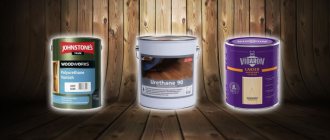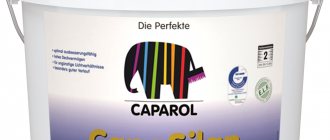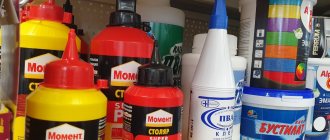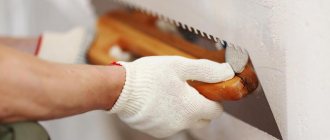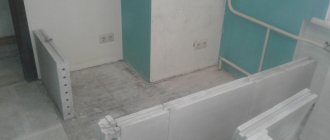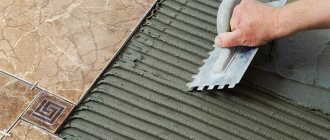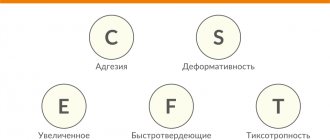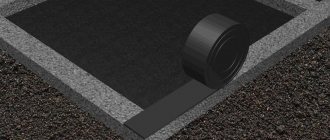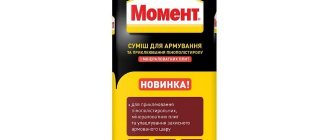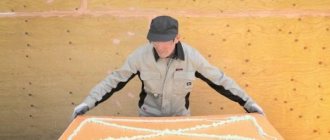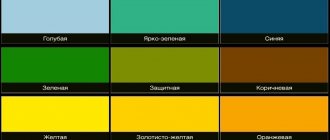High temperature mixtures: Adhesives and sealants are a type of silicone-based products that have a special chemical composition. Such products withstand high temperatures well, and at the same time remain elastic, holding two surfaces together. The use of high-temperature mixtures is advisable in the kitchen, when installing household appliances or an oven. Often, kitchen appliances are exposed to aggressive water and heat, which leads to untimely failure of the equipment. To avoid this, sealants can be used during installation. To make the right choice, just study the ratings and customer reviews published in our article.
Selection Criteria
Metal glue is an alternative to classical welding.
The advantages include ease of use and no need to have special equipment. You can work at home without experience, relying only on the instructions for use.
In order for the connection of metal to metal or other material to be reliable, the means must be chosen taking into account future operating conditions. For example, the composition must be waterproof or heat resistant.
You should also pay attention to:
- for the period, conditions for hardening;
- maximum, minimum temperature at which the glue retains its properties;
- method of application to the surface - spot or continuous;
- type, form of glue (liquid, paste, one or two-component);
- the maximum load-bearing capacity of the seam, its elasticity.
The surfaces to be bonded are also taken into account. Universal mixtures will not be the best solution. It is necessary to use specific glue for specified purposes.
The increased viscosity of the composition expands the scope of application.
The main advantages of glue
In addition to the already mentioned qualities of obtaining a super-strong connection and versatility in terms of use, hot-melt adhesive has other useful properties:
- the polymerization process of the material occurs incredibly quickly, but the drying time depends on the thickness of the applied layer, the condition of the bonded surfaces and the ambient temperature;
- the ability to create a rigid connection; only those materials and products that should not be subject to thermal expansion during operation can be glued with hot-melt adhesive;
- products connected with hot-melt adhesive have a long service life; they are not afraid of moisture, frost, or ultraviolet rays.
The advantages of the material also include its quite reasonable price; a kilogram of hot-melt adhesive costs around 300-350 rubles.
Technical characteristics of heat-resistant glue of different brands
Heat-resistant adhesive is a solid or liquid composition consisting of epoxy resin and metal filler.
- Resin acts as the main component that serves to bind the elements.
- The metal filler is an important element of the mixture, giving high heat resistance and reliability to the bonded structure.
In addition to the main substances, the glue contains modifying additives, plasticizers, sulfur and other elements that give the glue the necessary texture and regulate the setting time.
The initial drying of the glue varies from 5 minutes for Penosil brand products to 60 minutes for Zollex glue. The complete drying time for these compositions is 1 and 18 hours, respectively. The maximum operating temperatures for the glue start from 120 degrees for Penosil and end at 1316 degrees for the high-temperature Almaz model. The average maximum possible temperature for most compounds is 260 degrees.
The cost of products depends on the manufacturer, release form and performance properties of the glue. Among the budget options is o, used for gluing ferrous and non-ferrous metals and produced in tubes with a capacity of 50 g. It can be purchased for 30 rubles.
The domestic brand “Super Hvat” has an optimal price-quality ratio. The composition costs around 45 rubles per 100 g. Formulations with a narrow specialization are more expensive. For example, the cost of a 300 gram package of “VS-10T” is about two thousand rubles, and the brand composition “UHU Metall” costs about 210 rubles for a 30 gram tube.
Features of the composition
Ready-made mixtures that can be used in furnaces exhibit the necessary properties due to their composition. Here, in addition to cement and sand, fireclay fibers and synthetic additives are necessarily present.
Tile adhesive usually contains plasticizers that add strength to the mortar. Fireclay fibers are responsible for temperature resistance. Their large number makes the mortar special: the laid brick cannot be moved from its place, otherwise all the properties of the composition will be violated.
Eunice brand mixtures
What do the main parameters say?
Many novice craftsmen mistakenly believe that indicators such as heat resistance, thermal strength, heat resistance and fire resistance are synonymous with one parameter. Then, if they use a universal product in which all these characteristics are expressed to a high degree, they may simply be lucky and the hot-melt adhesive will cope with all the functions. Professional craftsmen distinguish between these terms and manipulate these parameters, selecting the composition for various types of work.
- Heat-resistant adhesive is capable of maintaining technical properties at temperatures above 140°C for several hours.
- Thermal-resistant material must retain its qualities for a long time.
- The heat-resistant material increases the temperature level of heat-resistant adhesive by 10 times.
- Heat resistance – the ability to maintain qualities under prolonged exposure to temperatures above 1000°C degrees.
- The fire-retardant composition comes into direct contact (open contact) with the flame itself for several hours.
- Fireproof adhesive is adapted to long-term contact with fire.
If the adhesive composition has only certain characteristics that are clearly expressed, then such a material is suitable for performing a narrow range of work.
Mixture under the brand name Terracotta
Heat-resistant and fire-resistant mixtures are used when laying fireclay bricks in the firebox itself. They form a durable solution that, when dried, has high adhesion and can withstand critical temperatures without cracking. Heat-resistant compounds are often used for laying stoves in heat exchange areas or in the labyrinths of a brick chimney.
Inexperienced craftsmen often come up with suggestions to use heat-resistant glue in all types of work, as it has the highest performance. Such an idea can be formulated from a lack of understanding of the basic processes that occur in a stove or fireplace during their operation.
Some contacting surfaces (fireplace walls and their lining) have different expansion coefficients. The connecting link can only be an elastic material, which is not heat-resistant glue. After drying, heat-resistant mixtures are able to deform without destruction under the influence of external forces. This adhesive is suitable for cladding the fireplace frame, as a tile mortar or in places where the temperature does not exceed 140°C degrees.
What to choose as glue
Those who have not yet gained experience in masonry related to stoves or fireplaces, but have decided to do all the work themselves, will be surprised by the incredible variety of materials that are presented by various manufacturers. But such diversity will not benefit the visitor, because the more alternative options, the more difficult it is to make a choice.
The main characteristics of the mixtures and methods of their preparation are written on the packaging. But only a professional can use this data correctly. It remains to focus on popular brands that have proven themselves to be high-quality universal products.
- Heat-resistant “Terracotta” adhesive is recommended for cladding work due to its high adhesion. It adheres well to tiles and decorative stones. Withstands temperatures up to 250°C degrees, but is destroyed under high mechanical loads. Not suitable for laying lower rows. Heat-resistant masonry mixtures can also be found under the Terracotta brand.
- If finishing is not planned, then brick laying should be done so that the mortar layer is as minimal as possible. Then the appearance of the masonry will be an original design discovery. Highly elastic Profix adhesive is suitable for finishing with various materials and can act as masonry mortar. Using it, it is convenient to make thin seams between bricks.
- The universal solution “Scanmix Fire”, which is positioned as heat-resistant, will help you build a brick fireplace or stove. Products from the Finnish company are in demand among professional stove makers. Its temperature limit reaches 1200°C degrees.
- In most cases, independent work is carried out with certain errors, which have to be corrected by cladding. But everyone knows that gluing tiles requires a perfectly flat surface, which a beginner cannot create. Ceresit Flex CM 16 adhesive differs from its analogues in that it allows work to be done on uneven surfaces. It is packaged and sold in paper bags and has an affordable price. The weight of the bag is 25 kg. “Ceresit Flex CM 16” is often asked by novice craftsmen on the advice of more experienced ones.
Composition of the Ceresit brand
A separate group includes materials that allow you to work with metal surfaces. This is relevant in the modern world, since a significant part of fireplaces have metal fireboxes or bodies, which also need to be finished.
- Dow Corning Q3-1566 has a high degree of elasticity because metals expand very strongly. And although its maximum temperature is 350°C degrees, it does not “drain” from the surface, as happens with a number of its brothers.
- Belife Silicone is positioned as a sealant. But it is often used as a masonry mortar. The main purpose is for repair work.
- PENOSIL Premium +1500 justifies its high cost with a wide range of surfaces to which it is applicable.
After a theoretical description of all characteristics, it is necessary to apply the knowledge in practice. To do this, you will have to list all the criteria that need to be taken into account. First, you need to decide on the purpose of using the glue. Will it be used for masonry or cladding?
Read the composition of the mixture carefully and pay attention to the temperature restrictions. Calculate the surface area and, knowing the consumption according to the documentation and packaging, determine the amount of material and its cost. Evaluate the popularity of the manufacturer's brand.
Types of high temperature sealant
Often, buyers are misled, not understanding what type of sealant to choose for a particular purpose. You can find two main types of sealant on sale, which are divided according to temperature parameters:
- High temperature red sealant. Withstands high temperatures, including temperatures of +250 degrees Celsius for a long time.
- Furnace, fire-resistant sealants. Designed specifically for use in stoves and heating appliances. Withstands temperatures up to +1500 degrees.
Source
Advantages and disadvantages
High consumer demand and a wide range of applications are due to a number of undeniable advantages of heat-resistant adhesive.
- The availability and reasonable cost of the compositions make the glue even more popular in the consumer market.
- Gluing parts by cold welding does not require professional skills or special welding equipment.
- Possibility of carrying out repair work without removing and dismantling the parts being repaired.
- The fast drying time of some models allows you to carry out repairs yourself and in a short time.
- Unlike traditional welding, the compositions do not have a thermal effect on metal components, which is convenient when repairing complex mechanisms and sensitive units.
- High quality of the connection guarantees the continuity of the fastened elements even under the influence of mechanical loads.
- Using hot melt adhesive, a fire-resistant and heat-resistant seam is formed. This is important when repairing metal structures that operate at temperatures exceeding 1000 degrees.
- There is no need for additional seam processing, such as grinding and leveling. This is an advantage of this group of glues over electric gas welding.
- Possibility of gluing metal with products made of rubber, glass, plastic and wood.
The disadvantages of heat-resistant glue for metal include the inability to repair major damage and problems with it. There is also a long time for complete drying of some compositions, and an increase in the time of repair work. The surfaces to be bonded must undergo thorough preparation using degreasing and washing of the working substrates.
Hot glue crafts
What can be made from hot glue? There are many ideas for crafts for beginners on the Internet (for example, on the YouTube channel Trum-Trum-Select), life hacks and interesting interior items are described. To work you will need:
- glue gun;
- foil;
- translucent paper;
- pencil;
- wax crayons;
- cardboard;
- acrylic paints;
- sparkles, etc.
You can use hot glue to decorate your phone case. The product is squeezed onto the product in the form of any pattern you like, allowed to dry, and then carefully painted with acrylic paint. You can also pour glue into a silicone mold and insert a metal ring on top. After hardening, you need to remove the mold - you will get an original keychain.
It's easy to fill your fangs with a gun for Halloween. To do this, you need to lubricate the foil with regular hand cream, then squeeze the teeth blanks directly onto the cream. After hardening, they can be removed, painted and glued to a cardboard mask. Using hot glue, you can draw on fabric, wool, paper and wallpaper, fulfilling all the most original ideas.
Glue characteristics
Today, adhesives differ in purpose and composition . The main types include: thermoplastic, thermosetting, drying and heat-resistant. The latter type is designed for use in conditions of temperature fluctuations. At high and low temperatures the base does not lose its properties. From the above, we can conclude that heat-resistant adhesives have characteristics that allow them to maintain their properties during temperature changes.
Scope of application
The spectrum of action of thermal adhesive is so wide that it can be considered a universal base. It is used when working with plastics, graphite, metal, etc. This adhesive provides a good effect when applied to glass or ceramics. We can say that this type of glue is used in many industries.
Properties of heat-resistant base
Often, both in production and in everyday life, there is a need to mount or connect certain components that operate at elevated temperatures . Of course, it will not be possible to completely do without welding, but it is possible to connect such components to perform work at high temperatures. The temperature range for heat-resistant adhesive is quite wide, which determines the universal properties of such bases.
Types of adhesives
Thermal adhesives have found widespread use in a variety of substrates designed for environments with thermal shocks.
Such foundations minimize the harmful effects of external conditions. Today, the industry produces various types of heat-resistant adhesives . There are natural and synthetic types on sale. The latter contain additional ingredients (plasticizers) to give them heat, moisture and frost resistance. Both the first and second types are used for installation work with fireplaces, tiles, glass and metal elements. The differences between synthetic and natural adhesives lie in the cost and quality of the composition. The glue is available in the form of a solution or mixture.
The liquid version dries quickly, so it can complicate the installation process. The dry mixture is easy to prepare, and its price is lower than ready-made.
Safety requirements
When working with heat-resistant adhesives, certain safety precautions . For example, the dry type can have a negative effect on the human respiratory system. Therefore, if necessary, use respirators.
Thus, all the facts indicate that heat-resistant adhesives do not have serious contraindications when working with them. But before starting work, it is necessary to first clearly define an action plan.
Hot-melt adhesives not only have resistance to temperature changes, but are also characterized by water-repellent properties. During operation, no harmful fumes occur. Therefore, for example, high-temperature ceramic adhesive can be used in bathrooms. It should be remembered that only a thoughtful approach to the selection of building materials will help make the right decision that meets all quality and safety requirements.
Surface treatment
If we talk about the gluing mechanism itself, it is mainly determined by the composition. Certain compositions are supposed to be applied to the entire surface, others - only by a spot method
Working with metal
When fastening metal elements, several methods are used: gluing, welding or mechanical connection. Gluing requires adherence to a special technique, which consists of a point impact on the target surface. For such work, it is recommended to use heat-resistant glue for metal 300 degrees.
As a rule, to work with metal elements, a special epoxy thermal composition with synthetic plasticizers and additives is used.
High-quality high-temperature metal adhesive can withstand temperatures of about 370 degrees. This determines its widespread use in the installation of heated floors. Hot-melt adhesive is often used in finishing works of saunas, fireplaces, stoves, etc.
Glass bonding
Today people value not only practicality, but also place increased demands on the aesthetic component. This is why, for example, household appliances are often made using various glass elements. Over time, such components may require adjustments. This group includes devices with a high degree of heating .
When operating under elevated temperature conditions, various violations of the integrity of components may occur. Heat-resistant adhesive for glass with organic compounds allows you to easily, quickly and reliably solve such problems without compromising the transparency of the surface.
Oven adhesive
Until recently, clay was the main material for facing hot surfaces.
But clay is a rather dirty and labor-intensive material to work with. There are 2 types of adhesives suitable for ovens. These are heat-resistant sealants and adhesives. Both options will allow you to reliably adhere: bricks to each other (hot-melt adhesives) and bricks with different materials (sealants). Heat-resistant adhesive for ceramics contains a special mixture of cement and sand with the addition of synthetic components. This increases the plasticity and adhesive properties of such bases.
In addition, the thermosealant is highly ductile and protects against deformation that occurs when heated.
When choosing glue when building fireplaces or stoves, you should pay attention to the toxicity of the components. As this parameter decreases, the amount of substances harmful to health released when exposed to high temperatures also decreases.
So which one should you choose?
This review is published to make it easier for you to choose the sealant or adhesive that best suits your situation. It contains sealants and adhesives from different manufacturers and price categories, as the popularity of the compositions decreases. Attached to the review will be a small reminder of what properties of the glue and under what circumstances you should pay attention first. So, if you just need to glue a tin screen onto a heating radiator, there is no point in using glue with a tensile strength of 100 kg - there will definitely not be such loads. In this case, it is better to pay attention to durability and resistance to external influences. There is also no point in fixing a leak in the radiator of your favorite car with a sealant designed for 1500°C. Now a small list of the main properties of sealants and adhesives will be given, which will help you understand a little about what you should pay attention to.
Types of high-temperature adhesives and heat-resistant sealants
Characteristics of heat-resistant adhesives
For heat-resistant adhesives, the main quality is, of course, heat resistance itself, that is, the preservation of its properties under temperature changes. The next equally important characteristic is the level of strength. Next comes adhesion, which differs with different adhesives and sealants and with different materials. Next, depending on the operating conditions, we pay attention to resistance to aggressive substances, weather conditions and mechanical stress. Also, the hardening time, which is usually indicated on the packaging, sometimes plays an important role.
Types of heat-resistant adhesives
All adhesives according to their composition are divided into 2 main groups - natural and synthetic. Natural composition includes elements from the groups of silicates and carboranes. Synthetic ones include various polymers. Synthetic adhesives are often two-component and consist of the glue itself and a hardener (a substance that activates polymerization).
- based on epoxy polymers - retain properties for 30,000 hours at temperatures up to +150°C, suitable for gluing almost any materials;
- based on organosilicon compounds (silicones) - retain properties for 2000 hours at temperatures up to +400°C, are suitable for repairing fireplaces, stoves and chimneys, and are also used in repairing car engines and sealing various components and assemblies. operating at high temperatures;
- based on organoboron compounds (carboranes) - up to 1000 hours at temperatures of +600°C and above, are used mainly in the repair of stoves, fireplaces, chimneys and other similar structures, but some types of such adhesives have nevertheless found application in other areas;
- inorganic - a short period of time up to 2000 ° C, at lower temperatures - indefinitely, used mainly in structures using open flames.
Video - Types of glue for various works
Characteristics of heat-resistant sealants
As with adhesives, heat resistance, strength and adhesion are just as important for sealants. Only, unlike adhesive compositions, for which this criterion is less important than strength, sealants must also have elasticity and resilience. High-quality compositions must retain it throughout its entire service life and not lose it from exposure to temperatures, weather and other influences.
Types of heat-resistant sealants
- heat-resistant have an operating temperature of up to +300°C;
- heat-resistant sealants are able to maintain their properties at temperatures up to +1200°C.
Sealants, like adhesives, can be divided into natural and synthetic. This separation occurs on the same principle as with adhesives - depending on the components included in their composition.
In addition to what has been said, I would like to supplement our review with several more positions of adhesives and sealants, undeservedly forgotten by cruel statistics, but rightfully deserving of a place at the top of our list.
Video - Review of high temperature sealants
Aluminum bonding
Before choosing a suitable adhesive for aluminum, you should remember that this metal is very difficult to process (including its gluing).
The fact is that in the normal state there is always a hard oxide film on the surface of the metal, which significantly reduces its adhesion to the adhesive mixture. To obtain the required result, you need to take care of the preliminary preparation of aluminum surfaces for gluing. To do this, they should be treated with special chemical compounds, which most often use alkalis and acids.
Sometimes mixtures based on epoxy resins are used for these purposes.
Among the known adhesives for metal, the most preferable is a two-component mixture, made on the basis of epoxy or acrylic components, supplemented with a hardener.
To obtain a high-quality connection, immediately after treatment with chemicals (before gluing), the surfaces are degreased and then covered with a layer of a special primer.
When preparing metal, care must be taken to ensure that the glue and primer do not react when mixed to form an undesirable chemical compound.
In addition to two-component adhesives, another type of heat-resistant adhesives for aluminum processing, colloquially called “cold welding,” has become widespread.
This composition is very convenient to use, but does not allow obtaining the required joint strength. Due to this limitation, its main area of application is sealing minor cracks and cracks.
Advantages and disadvantages of hot melt adhesive
Like any material, heat-resistant mixtures have their obvious advantages:
- Ease of use. No additional equipment is required for use. High temperature metal adhesive can partially replace welding work.
- High connection reliability. The created seam is resistant to deformation loads, humidity, and elevated temperatures.
- Fast drying. Initial setting within 10 minutes. Maximum strength is achieved after 24 hours.
- Does not shrink or crack over time.
Disadvantages include:
- Repairing minor damage. If large defects occur, a full repair or complete replacement of components and parts is required.
- The need to prepare surfaces before applying the mixture.
- The composition creates an inelastic seam.
Heat-resistant adhesive for tiling stoves and fireplaces
When facing stoves or fireplaces with clinker, fireclay or other heat-resistant finishing materials, ordinary glue is not suitable.
Only heat-resistant tile adhesive should be used. This glue is produced in dry mixtures that have special chemical components that do not lose their properties when heated. Such mixtures are classified as environmentally friendly building materials that do not emit toxins during operation. Fireproof tile adhesive refers to silicates that are made on the basis of liquid glass with the addition of heat-resistant clay, kaolin, and some binding elements. This material is ready for use, it adheres well, and is easy to apply to a previously prepared surface.
Rating of famous brands
Today, manufacturers offer more than two thousand types of heat-resistant adhesives. We offer a rating of the most famous and sought-after brands:
- Heat-resistant glue Mastix. Universal adhesive component for repair, insulation and connection of elements made of metal, glass, ceramics, heat-resistant plastics. Withstands the range from -60 to +255˚С. Available in an easy-to-apply blister. Suitable for minor repairs of household appliances, cracks in water pipes up to 2 mm in size. Can be applied to a damp surface. The package costs 250 grams. from 80 rub.
- Silicone sealant Macroflex TA145 red. One-component composition, polymerizes under the influence of atmospheric humidity. Withstands temperatures from -60 to 280˚С. Used for sealing parts made of glass, stone, ceramics, plastic, household appliances, heating systems, motors. Creates an elastic seam of increased strength. Available in a tube with a cone dispenser. Packaging 300 ml. costs from 360 rub.
- Heat-resistant dust-free adhesive OSNOVIT PECHFORM AC150 Ld. Dry mixture for self-mixing cement-based mortar. Used for lining fireplaces and stove chimneys with ceramics, stone, and brick. Withstands heating up to 160˚C. During operation, dust formation is reduced by 90%. Sold in bags of 25 kg, price from 760 rubles.
- Done Deal Heavy Duty Repair Sealant. For repairing cracks in steel and cast iron elements. Creates a seam resistant to vibration and mechanical loads, heating up to 1400˚C. Can be used in car repair, repair of boilers, burners, steel stoves, grills. Replaces welding. Package price from 340 rub.
- Moment Epoxylin. Heat resistant epoxy material. Suitable for glass, metal, ceramics. Once fully cured, the joint can be machined, polished or drilled. Package price from 290 rub.
Poxipol
The glue is heat-resistant, water-resistant, and quick-hardening. Withstands low temperatures, resistant to moisture, waterproof. Adheses well to many surfaces. It has a gray color, which makes it invisible on metal. The Poxipol package contains two tubes - the main component and the hardener. Mix in a 1 to 1 ratio and immediately apply to the metal base.
After 10 minutes the layer becomes durable. After an hour, the part can be machined - drilled, cut, sawed. But, complete polymerization requires 24 hours.
Poxipol is inexpensive, but has disadvantages:
- does not connect thin bases end to end;
- Due to its thick form, it is applied only in a thick layer.
Weicon VA 110
The composition has officially confirmed environmental friendliness (NSF certification).
- The glue is moisture resistant;
- operating temperature -30 - +80 °C;
- because of the cyanoacrylate it contains, it is called superglue - polymerization from 20 to 50 s;
- maximum strength after 24 hours;
- shear strength – up to 20 N per mm2 after sandblasting;
- no color, completely transparent;
- in addition to metal, glues plastic, rubber, caoutchouc and others;
- Can be used for metal utensils that come into contact with food.
The composition is expensive: for a 12-gram tube you will have to pay a little more than 1 thousand rubles, while 60 g of the product costs more than 3 thousand.
Strong steel stick renewal composite 114 g
Has high adhesion and rapid polymerization (20 minutes). The basis is epoxy resins. The structure is plastic, easy to apply. The shape is a plasticine rod. Before application, knead with hands.
After polymerization, it is resistant to stress, chemicals, salts, alkalis, acids, and solvents.
Great for patching pipes. Difficult to access on the Russian market, not so cheap. It has disadvantages similar to Poxipol.
Weicon RK-1500
Two-component adhesive composition for metal. Connects iron, steel, aluminum, and other alloys. Strongly holds thin sheets of metal end to end.
- Also suitable for plastics and ceramics.
- The glue can be called high-temperature: it can be used from -50 to +130 °C, and overheating is allowed up to 180 °C for a short time.
- Tensile strength after drying up to 26 N per square meter. mm.
- 5 minutes after treatment, the adhesive joint reaches its initial strength.
- The activator can be added to one or both sides of the main component. This depends on the thickness of the applied layer - from 0.4 mm to 0.8 mm.
- The activator must be applied carefully. Due to the too liquid consistency, it may spread.
- It even glues substrates of different structures, the adhesion between which is minimal, for example, metal with glass, other smooth substrates.
Special glue Poxipol “Cold welding” (gray)
Rating: 4.6
Why it: Short curing time, low price.
Two-component epoxy adhesive for metal “Cold Welding” from the Poxipol company is characterized by an extremely short curing time. The necessary and sufficient hardness occurs within 10 minutes after application! And after an hour it becomes so strong that the parts connected by it can be processed - drilled, sawed, cut, etc. However, it is worth considering that - like other epoxy resin-based adhesives - it takes about a day to fully polymerize.
The adhesive is highly resistant to aggressive external influences. It does not degrade when exposed to moisture, direct sunlight, or extremely high or low temperatures. This glue is also characterized by increased adhesion to most surfaces. The tightness and reliability of “Cold Welding” makes it suitable even for repairing water or gas pipelines.
The gray color makes it invisible on the metal surface.
Universal super glue super Bison Super Glue Gel, 3 g
Rating: 4.3
Why it: One of the strongest all-purpose superglues.
The universal superglue Bison Super Glue Gel is highly durable and reliable. It is suitable for minor household repairs of a wide variety of items, including those made from metal alloys. The special gel texture prevents leakage and spreading, making it much more convenient and safer to attach different parts.
It is worth noting that this material takes a little longer to harden than regular superglue - sufficient peel strength is achieved in 1-2 minutes. But this also reduces the risk of errors and increases safety during use, and also simplifies overlap joints - by moving the fastened elements, you can achieve uniform distribution of the composition over their surface to increase reliability.
The material quickly and reliably fills pores and microcracks on the surface. This results in increased durability.
EpoximaxX
It is an improved version of the classic epoxy EAF. The hardening time (3 hours), thermal resistance (120 °C) have changed, and operation in heated conditions has become possible. EpoximaxX does not change properties when moistened. Tensile strength is 60-80 MPa.
The consistency is liquid, so application with a brush is possible. Recommended for gluing large areas overlapping rather than end-to-end. It's inexpensive.
Bison Super Glue Gel
This is superglue for minor household repairs. It is universal and adheres to different materials. The consistency is similar to a gel, which makes it easier to use and prevents spreading.
- It hardens in one to two minutes, which allows you to adjust the position of parts after fastening and reduce the risk of finger gluing, as in the case of conventional superglue.
- By spreading it on the metal, small cracks are filled with glue. pores, which increases the reliability of the coupling.
- The tube contains only 3 g of substance, enough only for small jobs.
Hot glue gun: design and operating features
The shape of a glue gun is similar to a regular gun, which is why it got its name. The device is filled with a glue stick, which, when heated, melts to a fluid consistency. The rod must be installed from the back of the tool, tucking it into a special receiver. During operation, its tip enters the heating module, and in about 4-5 minutes the glue melts. When the trigger is pressed, the composition comes out of the nozzle onto the surface of the product.
The design of the glue gun includes the following elements:
- Heating module. Located in the barrel, it is a metal reservoir, at the bottom of which there is a heating unit. More expensive models have multiple heating units to melt the glue.
- Ring pusher. This is the glue supply mechanism that most often breaks, mainly due to excessive force by the user.
- Clutch. It looks like a tubular receiver located under the glue heating chamber. The coupling is needed to seal the system elements so that the molten composition does not get into them.
- Nozzle (nozzle, nozzle). Allows you to direct the flow of glue in the desired direction. There is a shut-off valve inside that prevents the solution from flowing out freely. The outside of the nozzle is coated with a heat-resistant alloy that protects it from damage. This part of the gun must be cleaned regularly to remove any glue residue.
Distinctive features of hot glue guns
When choosing, you need to pay attention to the quality of the hot glue gun body. The box itself should be made of durable polymers that can withstand heat without burning your hand. There are models with a viewing window where you can see the remaining glue. The handles often have anti-slip inserts, and the package includes a stand. An interesting design is the spray gun, which significantly speeds up the application of glue to large surfaces. When purchasing a gun, you must compare the diameter of its barrel with the size of the glue stick - they must match.
Required glue heating temperature
The glue begins to melt already at +80 degrees, but the process will be very slow. Therefore, guns make it possible to melt the material at +150…+200 degrees, which seriously increases productivity. In expensive professional models, the heating temperature of the glue reaches +500 degrees.
Glue feed speed
Typically glue guns can dispense 5-20g of glue per minute, although the rate depends on heating time and user need. The upper limit of the indicator, in fact, is the limit of the capabilities of both the device and the master, otherwise there is a high risk of making a mistake. However, special high-speed guns (30 g of glue per minute and above) are sold for professionals.
Security measures
Working with glue, as with other chemical compounds, requires the following precautions:
- When using dry mixtures, use respirators. Inhalation of cement dust and chemicals can lead to poisoning.
- After finishing work, ventilate the room.
- Avoid getting glue on exposed skin.
- Keep the glue tightly closed and out of reach of children.
We recommend watching the video review:
Sources
- https://KraskaGuru.ru/klej/dlya-stroitelstva/po-metallu.html
- https://stroy-podskazka.ru/montazhnyj-klej/termostojkij-dlya-metalla/
- https://ochg.ru/kaminy/montazh/klej-dlya-pechej-i-kaminov.html
- https://uborka.co/uhod/termostoykiy-kley
- https://ProtivPozhara.com/zaschita/stroitelstvo/termostojkij-klej-dlja-metalla
- https://VseProKley.ru/vidy/termostojkiy-kley
- https://mr-build.ru/newteplo/termostojkij-klej-dla-pecej-i-kaminov.html
- https://expertology.ru/6-luchshikh-kleev-dlya-metalla/
[collapse]
Methods of applying glue
The easiest and most cost-effective ways to work with glue are to apply it manually, spreading the mass with a small roller with preheating. Still, it is much more convenient to use a glue gun, especially if you need to attach not too small parts. The glue stick in the gun will warm up, after which the composition will be ready for use.
Gluing is carried out in this way:
- clean the parts from dirt, dust, completely degrease the working surface (fats can be dissolved with acetone, alcohol);
- dry its base, otherwise the degree of glue adhesion will greatly decrease;
- smooth parts should be treated with sandpaper to improve adhesion to glue;
- heat elements that are too cold or bring them into the room so that there is no sudden temperature change and the glue lays evenly;
- insert the glue stick into the cartridge, turn on the gun (into the outlet or with the button if the device is battery-powered);
- by pressing the trigger, apply glue in strips, dots or sine waves;
- quickly connect the parts together, firmly press them together without delay, and fix them.
How long the glue dries is always indicated in the instructions. Usually it completely hardens in 15-30 minutes, but it is better to start using the product after 2-3 hours.
Safety precautions when working with hot glue
The toxicity of the substances that make up hot-melt adhesive is low, but to prevent inhalation of its fumes during prolonged use, it is still worth using a respirator. When gluing small products quickly, good ventilation of the room is sufficient. More often other problems arise - burns, because the glue comes out very hot. Care must be taken when working with the composition; if necessary, work with gloves.
